Top Rankings
Lawrence School District ranks among the top 20% of public school district in Kansas for:
Category
Attribute
Diversity
Most diverse schools (Top 1%)
Community Size
Largest student body (number of students) (Top 1%)
For the 2025 school year, there is 1 public preschool serving 425 students in Lawrence School District. This district's average pre testing ranking is 6/10, which is in the top 50% of public pre schools in Kansas.
Public Preschool in Lawrence School District have an average math proficiency score of 32% (versus the Kansas public pre school average of 38%), and reading proficiency score of 47% (versus the 40% statewide average).
Minority enrollment is 46% of the student body (majority Hispanic), which is more than the Kansas public preschool average of 36% (majority Hispanic).
Overview
This School District
This State (KS)
# Schools
18 Schools
563 Schools
# Students
10,592 Students
175,366 Students
# Teachers
621 Teachers
12,675 Teachers
Student : Teacher Ratio
17:1
17:1
District Rank
Lawrence School District, which is ranked within the top 50% of all 286 school districts in Kansas (based off of combined math and reading proficiency testing data) for the 2021-2022 school year.
The school district's graduation rate of 90% has increased from 83% over five school years.
Overall District Rank
#80 out of 286 school districts
(Top 30%)
(Top 30%)
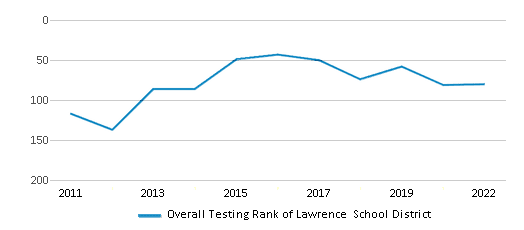
Math Test Scores (% Proficient)
32%
29%

Reading/Language Arts Test Scores (% Proficient)
38%
32%
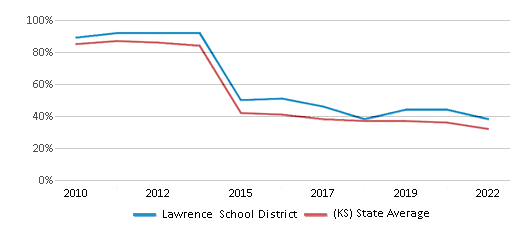
Science Test Scores (% Proficient)
37%
31%

Graduation Rate
90%
89%

Students by Ethnicity:
Diversity Score
0.57
0.55
# American Indian Students
249 Students
1,258 Students
% American Indian Students
2%
1%
# Asian Students
303 Students
3,742 Students
% Asian Students
3%
2%
# Hispanic Students
1,363 Students
35,106 Students
% Hispanic Students
13%
20%
# Black Students
647 Students
10,873 Students
% Black Students
6%
6%
# White Students
6,638 Students
112,046 Students
% White Students
63%
64%
# Hawaiian Students
11 Students
394 Students
% Hawaiian Students
n/a
n/a
# Two or more races Students
1,381 Students
11,947 Students
% of Two or more races Students
13%
7%
Students by Grade:
# Students in PK Grade:
215
21,709
# Students in K Grade:
674
25,257
# Students in 1st Grade:
736
25,383
# Students in 2nd Grade:
740
25,757
# Students in 3rd Grade:
747
23,472
# Students in 4th Grade:
724
23,284
# Students in 5th Grade:
765
21,197
# Students in 6th Grade:
792
6,799
# Students in 7th Grade:
734
1,086
# Students in 8th Grade:
823
1,161
# Students in 9th Grade:
826
56
# Students in 10th Grade:
909
66
# Students in 11th Grade:
943
65
# Students in 12th Grade:
925
74
# Ungraded Students:
39
-
District Revenue and Spending
The revenue/student of $15,731 in this school district is less than the state median of $16,276. The school district revenue/student has grown by 7% over four school years.
The school district's spending/student of $14,649 is less than the state median of $17,192. The school district spending/student has grown by 7% over four school years.
Total Revenue
$167 MM
$7,774 MM
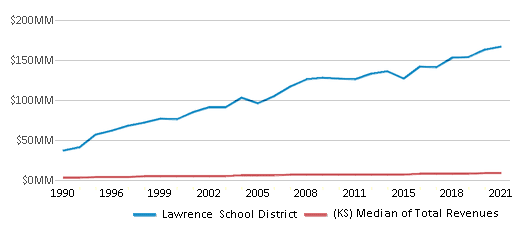
Spending
$155 MM
$8,211 MM

Revenue / Student
$15,731
$16,276
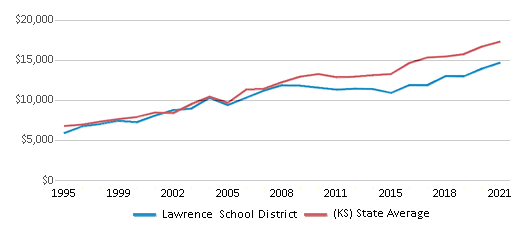
Spending / Student
$14,649
$17,192
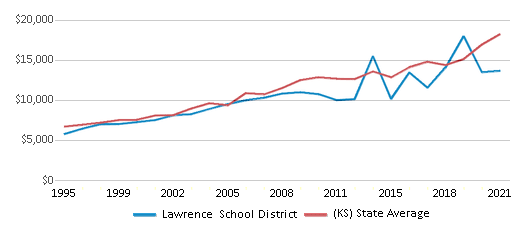
Best Lawrence School District Public Preschools (2025)
School
(Math and Reading Proficiency)
(Math and Reading Proficiency)
Location
Grades
Students
Rank: #11.
New York Elementary School
(Math: 30-34% | Reading: 45-49%)
Rank:
Rank:
8/
Top 30%10
936 New York Street
Lawrence, KS 66044
(785) 832-5780
Lawrence, KS 66044
(785) 832-5780
Grades: PK-5
| 425 students
Recent Articles

Year-Round Or Traditional Schedule?
Which is more appropriate for your child? A year-round attendance schedule or traditional schedule? We look at the pros and cons.

Why You Should Encourage Your Child to Join a Sports Team
Participating in team sports has a great many benefits for children, there is no doubt. In this article you will learn what those benefits are.

White Students are Now the Minority in U.S. Public Schools
Increasing birth rates among immigrant families from Asia and Central and South America, combined with lower birth rates among white families, means that for the first time in history, public school students in the United States are majority-minority. This shift in demographics poses difficulties for schools as they work to accommodate children of varying language abilities and socio-economic backgrounds.





